“Yuki set up shop near an open window, laptop out, and took the first sip of a turmeric chai latte. The aromatic, golden, bitter-sweet brew warms the soul, inside and out. The mind focused as the body relaxed, ready to take on the day.”
– Scene from a local coffee shop
What’s the Story
What is Turmeric?
Turmeric is something that we’ve all used, probably without thinking much about it.
It is a plant in the ginger family, native to South Asia. The roots of the plant are where the action is. It has been used as a medicine for thousands of years. And use has spread to far reaches and become part of local cooking and medicine cultures across Asia and Africa. It is the ingredient that gives delicious curry its famous yellow color.
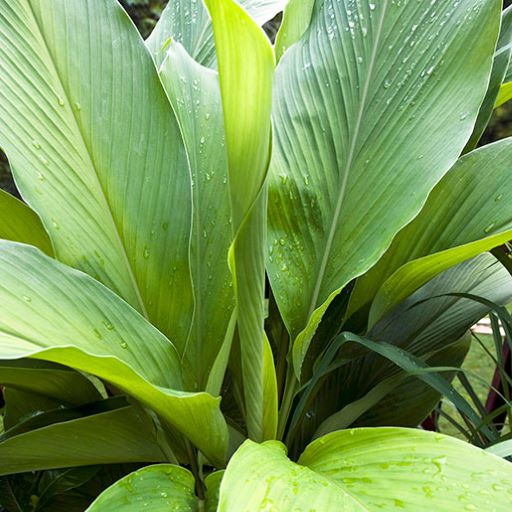
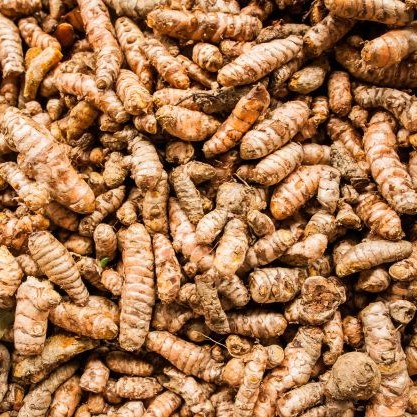
What Turmeric Is Used For
In addition to cooking, it has long been a key ingredient to many alternative medicine practices including: Ayruveda (traditional Indian medicine), Kampo (Japanese herbal medicine), and traditional Chinese medicine (TCM).
The list of reasons people say they use the root is long. They include things such as:
- arthritis
- asthma
- Alzheimer’s disease
- depression
- indigestion
- infection prevention
- inflammatory bowel disease
- gas
- menstrual pain
- wound healing
It is also said to help treat skin, liver, and lung problems. In addition, it is reported to have heart health and memory benefits as well as the effects of:
- Anti-aging
- Anti-cancer
- Anti-diabetic
- Anti-inflammatory
- Anti-allergy
- Antioxidant
Keep in mind, however, many of these uses do not have much good-quality medical evidence.
Is Turmeric Good for You?
Coming up in this article, we will take a deep dive into the science of this root remedy. First, we will describe what it is good for and how it works. Then we will discuss the uses of turmeric that have strong scientific evidence. Finally we will look at the best ways to use it and how much is healthy to take.
I was fascinated to learn about the science behind something I’ve been eating for many years. I can’t wait to share my research with you.
Turmeric Truth: The Good and The Bad
What Is Turmeric Good For?
Our radical root has three main uses.
- a spice used to flavor cooking
- as dye in processed foods, cosmetics, and textiles
- a medicinal plant in traditional and alternative medicine
For today’s exploration we will focus on its medical properties.
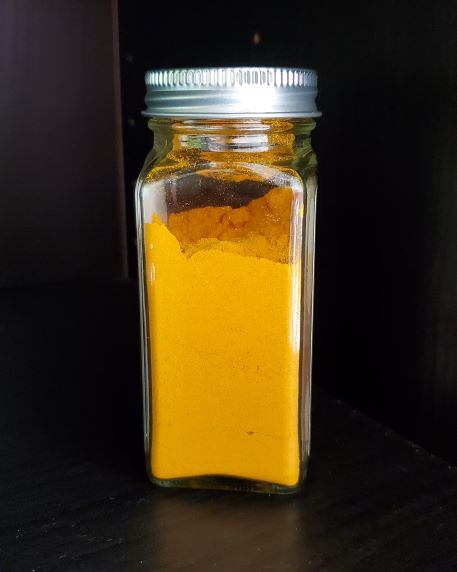
Why Turmeric Is Good for You
There’s a reason why I studied pharmaceuticals. Modern medicine is an incredible thing! Thanks to medicine and educated healthcare providers we are living longer and healthier lives than any other time in human history. However, modern medicine usually targets one specific disease or problem at a time.
But disease is a complex process. It often affects multiple body systems for different reasons. So, scientists believe that what makes turmeric good for us is its ability to target multiple health conditions at once with low doses.
What Are the Health Benefits of Turmeric?
Research suggests that turmeric has many health benefits and is generally safe for most people to take. A chemical in the root called circumin is responsible for most of the medicinal benefits and the most well studied part of turmeric. When we discuss the effects of turmeric, keep in mind most of the data comes from studies with circumin.
How It Works
So, what does turmeric do for you? Studies using turmeric, and its chemical circumin, confirm that turmeric has anti-inflammatory and antioxidant properties. For more information about the actions of antioxidants, check out this article. A lot of what turmeric does for the body is related to these properties. For example, this is the reason turmeric can relieve pain, inflammation, and help people with arthritis. It may also explain the health effects seen in studies for people with type 2 diabetes.
Turmeric has also been shown to have another property known as antiproliferative. This means it prevents or slows down certain types of reactions inside our bodies’ cells. This action may be responsible for what researchers believe may be the anticancer effects of turmeric. Similarly, it appears to prevent blood cells from sticking together. This may improve blood flow and heart health. However more research is needed about these topics to prove exactly how they work and if they’re safe.
Who should avoid it?
People who are pregnant and breastfeeding should avoid turmeric in high doses. The reason is because we do not have a lot of safety information for these people and some concerns have been shown in studies with animals. Also, for people who have problems with their gallbladder or gallstones, turmeric may make their condition worse.
Importantly, people who are at risk for bleeding, such as people on blood thinners or those going for surgery, should avoid turmeric. It may be easier to bleed while using this supplement in large doses.
Drug Interactions and Warnings
Bad effects from turmeric are incredibly rare. In the US, turmeric enjoys the status of being generally recognized as safe (GRAS) by the Food and Drug Administration (FDA). The most common side effects from using high doses of circumin are stomach upset and nausea. Interestingly, people who use big amounts of turmeric, or circumin, may notice their poop is dyed yellow.
No toxic events have been reported in humans however, some people can have a rare but serious allergy. If eating turmeric gives you hives, shortness of breath, or a rash, stop using turmeric and seek medical advice from a healthcare provider.
There is the potential for important drug interactions including medications that can cause bleeding. This includes:
- medications that block platelets — like aspirin and clopidogrel (Plavix)
- anticoagulant medications — like warfarin (Coumadin), rivaroxiban (Xarelto), and other blood thinners
- anti-inflammatory (NSAIDs) medications — like ibuprofen (Motrin, Advil) and naproxen (Aleve)
Finally, since it can lower blood sugar levels, people who use medications for diabetes or insulin should use turmeric with caution.
How to Use Turmeric
Use of Turmeric
Turmeric can be found most commonly as a cooking ingredient or health supplement. When used for cooking, it is available as both a fresh root in the produce section or dried powder in the spices. As a supplement it can be taken as either a powder or capsule.
Make sure to store your turmeric powder in a cool dark place, out of direct sunlight, to maintain its flavor and health effects.
Cooking with Turmeric
In my opinion, your diet is the most helpful and fun place to put turmeric. In the West, we commonly think of it as a warm and bitter spice used in cooking. Try different foods and recipes that could expand your use of the super spice.
In addition to being the color in curries, it is also used to dye other edibles such as cheese, butter, mustard, cereals, and other processed foods. Check the ingredients of the foods you eat, you may be surprised to learn that you already have turmeric without knowing it.
What is Golden Milk?
Looking for an interesting way to pack some turmeric into your diet? Golden milk, known as haldi doodh in Hindi, is a milk and turmeric beverage I discovered while doing research for this article.
But it isn’t new. It has a long tradition in India as a soothing warm drink for sore throats and a household cure for the common cold. The golden colored drink is made from mixing turmeric and other spices into warm milk, then sweetened. You can also use a delicious milk substitute if cow’s milk isn’t your thing.

Turmeric Dose
As mentioned before, one of the best ways to use turmeric is in your diet at low doses over a long time. However the use of turmeric and circumen with pills or extracts is gaining popularity and they are usually safe. In clinical trials, doses of up to 12 grams per day have been studied.
This is what 1 gram of turmeric powder looks like.
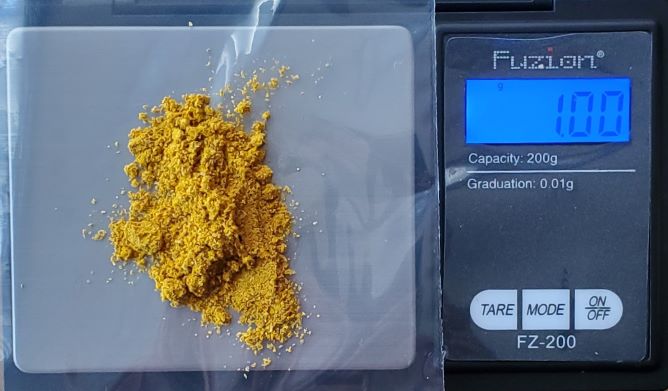
Dose by Condition
Modern research has shown that turmeric may have a positive effect on many health conditions. Most scientific studies are done using the circumin component of turmeric. I will share the most common uses with the best evidence for its effects in this table.
| USE | CIRCUMIN EXTRACT DOSE (in milligrams) | CIRCUMIN DAILY MAXIMUM (in milligrams) | TURMERIC DOSE | NOTES |
| Anti-Inflammatory | 400 : 1 to 3 times per day | 6,000 | 8 – 60 grams : 1 to 3 times per day | |
| Arthritis | 500 : 1 to 2 times per day | 1,500 | ||
| Cholesterol Lowering | 500 : 1 time per day | 500 | ||
| Heart Health | 250 -300 : 2 to 3 times per day | 1,000 | plus diet and lifestyle improvements | |
| Indigestion | 1.3 – 3 grams per dose | 30 – 60 minutes after a meal, plus diet and lifestyle changes | ||
| Irritable Bowel Disease (Ulcerative Colitis and Crohn’s Disease) | 1,000 – 1,500 : 1 to 3 times per day | 3,000 | in combination with standard treatment | |
| Irritable Bowel Syndrome | 1.8 – 3.6 grams per day | |||
| Pain Relief | 500 : 1 to 4 times per day | 2,000 | ||
| Pre-diabetes Health | 750 : 2 times per day | plus diet and lifestyle improvements |
It is important to remember that none of these uses for turmeric have been evaluated by the FDA. It is a lengthy process to allow a medicine to make a health claim in the United states. Part of that process involves large clinical studies which evaluate the safety and effects of a drug. In the case of turmeric, we still need more data.
Final Thoughts
The popularity of turmeric as a health food and supplement continues to skyrocket. Thousands of research articles have been published in recent years with more on the way. Although I’m not entirely sold on the idea of taking supplements every day, I completely endorse its use in your favorite foods. Find new ways to incorporate turmeric into your cooking and diet to maximize its natural healing benefits.
In the US, the National Institutes of Health (NIH) is currently funding research into this tropical superfood. The more we can learn about its healing powers the more people can be helped. Research could make natural products more effective or identify chemicals within the root that will become amazing future medicines.
I am a big fan of medicinal plants because they are incredibly interesting. If you are too, you may be interested in these articles on kava – the relaxation root and kratom – a plant-based painkiller.
Talk Nerdy to Me (Details for Professionals and Curious Minds)
The Turmeric Plant
Curcuma longa, is a plant native to India and South Asia which requires tropical temperatures and abundant rainfall. This area still produces upwards of 80% of the global supply. The rhizome of the plant is dried and ground into the powder described as turmeric.
Chemistry and Kinetics
Tumerone is the volatile oil in turmeric from which the spice derives its aroma.


Circuminoids (CMMs) are responsible for turmeric’s resplendent color. CCMs are the proposed components which confer much of the therapeutic effects of turmeric. They account for 3 – 6.6% of turmeric composition by volume.
Circumin is the most abundant of the intrinsic CMMs accounting for approximately 75%. However its natural-state biological impact is limited by low bioavailability and aqueous solubility. This is due to several factors including its low stability under physiological conditions. Through ongoing research and clinical trials, synthesized analogs and delivery devices are being developed to overcome these biochemical shortcomings.
Pharmacology and Therapeutics
Initial studies suggest a myriad of potential roles for turmeric across diverse disease states. It should be noted that the vast majority of predictive studies have been completed in vitro or in animal models. Caution should be warranted in extrapolating evidence to a human model.
Anti-Allergy
Studies in animal models suggest that curcumin has anti-allergic properties that depress the typical response cascade including mast cell recruitment and histamine release. It has been proposed that these effects are mediated through a combination of mechanisms. Most notedly by curcumin’s ability to modulate oxidative stress and thereby the release of inflammatory cytokines. However, preliminary data suggest that additional contributory mechanisms may act in concert to induce this effect.
Anti-Inflammatory
Turmeric extract has been demonstrated to inhibit tumor necrotic factor (TNF) and prostaglandin synthesis and propagate an anti-inflammatory effect. In a human study, standardized dietary turmeric intake for 8 weeks reduced the symptomatology of irritable bowel syndrome in patients as demonstrated by a reduction in pain and discomfort.
Antimicrobial
Some evidence points to antimicrobial properties. Studies performed have examined an ability to inhibit the growth of various pathogens such as H. pylori. According to a study of several plant extracts, including cumin, ginger, and oregano, turmeric exhibited the most antimicrobial activity.
Antioxidant
Turmeric’s apparent ability to reduce oxidative stress has been elucidated by animal studies. A solution of turmeric 100 mcg/mL displayed antioxidant activity via the inhibition of lipid peroxidation. Circumin in particular has the ability to chelate with transition and heavy metals to form stable complexes.
Animal models suggest that it also may stabilize blood glucose levels in diabetics and prevent oxidative stress.
Antiproliferative
Some evidence also points to antiproliferative effects of carcinogenic cellular isolates. Animal studies report positive findings in the reduction of solid tumor burden in skin, breast, oral, and stomach cancers. This is accomplished through several mechanisms including inhibition of proliferative transcription proteins.
Hepato-Circulatory
Hepatoprotection has also been a purported application of turmeric. Studies in rodents have demonstrated that therapeutic application resulted in increased hepatic lipid metabolism and a reduction in laboratory values consistent with hepatic impairment, such as transaminases (AST, ALT) and alkaline phosphatase. In addition, the consumption of a turmeric extract resulted in the improvement of cholesterol ratio including the reduction of low-density lipoprotein (LDL) and increase in high-density lipoprotein (HDL) levels.
This in turn has led to speculation that curcumin might also reduce the risk of cardiovascular disease.
Clinical Utility and Toxicology
Clinical studies performed with human show promising initial results. However, the general utility across various indications has potential limitations. As an example, positive results in a clinical trial examining turmeric’s use in peptic ulcer disease were reported. Patients received 600 mg five times daily for 4 weeks resulting in improvement of ulceration. However, it was revealed to be less efficacious than standard therapy with antacids.
Dietary consumption of turmeric in areas of high prevalence has been estimated to be between 200 – 1000 mg/day. Tolerability studies have demonstrated that circumin doses of up to 12,000 mg/day were well tolerated.
Toxicology data show that supplementation with both turmeric and circumen are remarkably benign. In animal studies, doses of 100 mg/kg/day for 90 days produced no negative sequelae. In rats the observed median lethal dose, LD50, was greater than 2,000 mg/kg/dose. For context this would be analogous to an average adult human taking a single dose of 120,000 mg.
If you have any questions regarding turmeric or any of our topics, feel free to contact us.
References
- Prasad S, Aggarwal BB. Turmeric, the Golden Spice: From Traditional Medicine to Modern Medicine. In: Benzie IFF, Wachtel-Galor S, editors. Herbal Medicine: Biomolecular and Clinical Aspects. 2nd edition. Boca Raton (FL): CRC Press/Taylor & Francis; 2011. Chapter 13. Available from: https://www.ncbi.nlm.nih.gov/books/NBK92752/
- Kotha RR, Luthria DL. Curcumin: Biological, Pharmaceutical, Nutraceutical, and Analytical Aspects. Molecules. 2019;24(16):2930. Published 2019 Aug 13. doi:10.3390/molecules24162930
- Kunnumakkara AB, Bordoloi D, Padmavathi G, et al. Curcumin, the golden nutraceutical: multitargeting for multiple chronic diseases. Br J Pharmacol. 2017;174(11):1325-1348. doi:10.1111/bph.13621
- Turmeric. Lexi-Drugs. Hudson, OH: Lexicomp, 2015. http://online.lexi.com/. Updated January 31, 2022. Accessed October 25, 2022.
- Liu S, Liu J, He L, et al. A Comprehensive Review on the Benefits and Problems of Curcumin with Respect to Human Health. Molecules. 2022;27(14):4400. Published 2022 Jul 8. doi:10.3390/molecules27144400
- Idowu-Adebayo F, Fogliano V, Linnemann A. Turmeric-Fortified Cow and Soya Milk: Golden Milk as a Street Food to Support Consumer Health. Foods. 2022;11(4):558. Published 2022 Feb 16. doi:10.3390/foods11040558
- Suzuki M, Nakamura T, Iyoki S, et al. Elucidation of anti-allergic activities of curcumin-related compounds with a special reference to their anti-oxidative activities. Biol Pharm Bull. 2005;28(8):1438-1443. doi:10.1248/bpb.28.1438
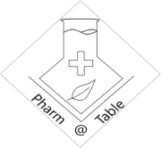
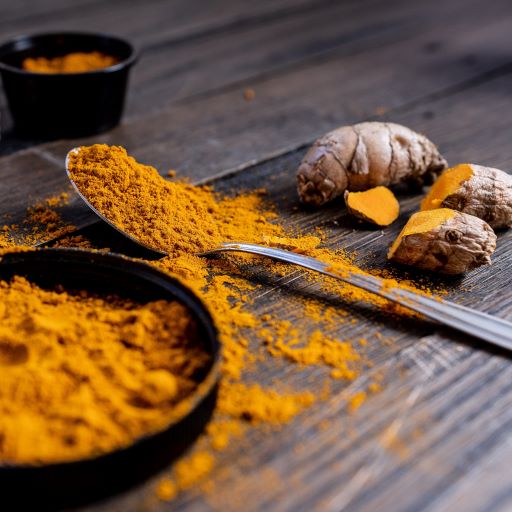
Good stuff! Thank you, I found the article to be very informative. I have been a fan of this root for many years.
I’m glad to know you found the article useful. I hope you continue to enjoy turmeric’s flavors and health benefits for years to come!
I loved this article! Your writing is clear and the content is so informative.
Thank you kindly for your feedback. My goal is to write in a way that is easy to read for anyone who wants to care for their own body.
Wonderful! I also love using it in soups like chicken noodle. Turmeric gives it a gorgeous color and it’s good for you. Win win. Thank you!
All the thanks goes to you for sharing the recipie pro-tip and turmeric love!
Another great write up! Love turmeric!!
Thank for coming back to the site! I’m so glad to know we write content you find useful.